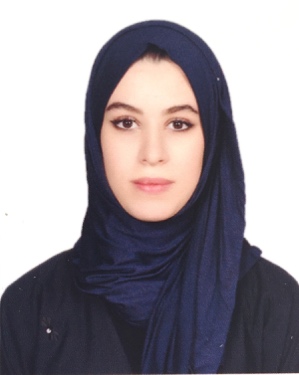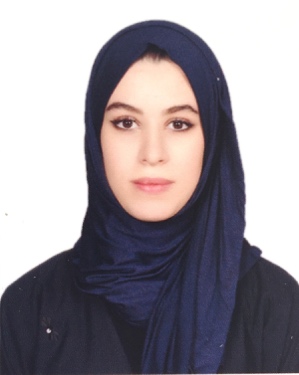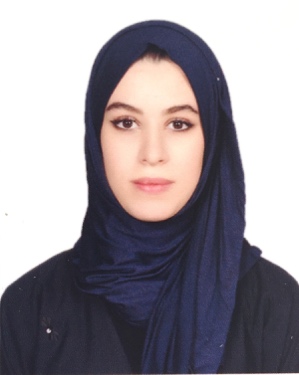Day 1 :
Keynote Forum
Nguyen Trong Binh
Biotechnology center, Vietnam
Keynote: Developing TAT-HA2 fusion apoptin of Chicken Anemia Virus approach to tumortherapy
Time : 00

Biography:
Kamyar Mazloum Jalali has two master of science degrees in Biology (Microbiology) and Medical Virology, which will complete the Master's degree in medical Virology in next two months. The author has two articles on nanotechnology and nanoparticle effects on bacteria.He have been cited 12 times his publication, H-index is 2 and has recorded the gene in ncbi. I now attend PhD in my country and look forward to the outcome
Abstract:
According to the World Health Organization (WHO), today, about 2 billion people are infected with Hepatitis B virus (HBV) and 350 million are carriers of this virus, it shows the importance and extent of HBV-related infections. The HBV has four ORFs (open reading frame), such as ORF x, which codes the protein x (HBx). This gene, by inhibiting proteasome in the MHC I pathway, caused activating the replication and transcription of the virus genes as enhancers and promoters, plays a role in the development of Cirrhosis and HCC (hepatocellular carcinoma) in the host cells. The mutations in this region are associated with chronic disease, the development and survival of HCC cancer, suppression of HBeAg secretion, and increased viral DNA synthesis. In a retrospective study, 50 samples from the serum of patients with CHB (chronic hepatitis B virus) were examined for the presence of mutations in the Enhancer II region of the HBx gene in HBV virus. In this study, the mutations in 465 base pairs of HBx were identified using HRM method and then analyzed by sequencing and Mega software. Out of the 50 patients with CHB, were 33 male patients (66%) and 17 female patients (34%) that 12 patients (24%) had serum HBeAg marker and 38 patients (76%) were negative. About 28 patients (56%) were positive 465 pairs specific product of HBx and 22 patients (44%) were negative. After analyzing the specific products from 28 positive HBx, 8 suspected cases of mutation were identified and sent for sequencing. The results of the sequencing showed that in 8 samples, 7 mutation of the type of base substitution in the HBx region occurred and 4 mutations in the Enhancer II region include T1654G, A1655T, A1659G, C1690G and 3 mutations in the Box α region called T1654G, A1655T, A1659G. The results showed that the high frequency of mutations in the Enhancer II region was between 1636 and 1741 nucleotide sequences. Considering the analysis of the three-dimensional structure of the mutant forms, it is likely HBx structure to be altered due to mutations. It may also play a role as a protein in escape the HBV virus from the immune system, lost the immunogenic property and the chronic infection process continues.
Keynote Forum
Sara Taleb
Hamad Bin Khalifa University, Qatar
Keynote: Level of Maternal Anti-F RSV Antibodies in Hospitalized Children and Correlates ofProtection
Time : 11:30-12:30

Biography:
Sara Taleb graduated with a Bachelor degree in Biomedical Sciences from Qatar University (2010-2015) and with a Masters' degree in Advanced Research Practices in Biomedical Sciences (2016-2018). She was a trainee at Hamad Medical Corporation in different laboratories (2015), a Research Assistant at Biomedical Research Center, Qatar University (2015-2016) and a Laboratory technician at National Center for Cancer Care and Research (2016-2018). She worked in different virus-related and cancer-related projects, published in peer-reviewed journals. She is currently a Ph.D. student in Genomics and Precision Medicine at Hamad Bin Khalifa University
Abstract:
Respiratory syncytial virus (RSV) is a threatening agent causing lower respiratory infections (LRI) among children, where no vaccine is available. Being highly-conserved and essential for viral entry, the stabilized form of F protein (Pre-F) is a potential vaccine candidate for pregnant women. Aim: To evaluate the level of maternal Abs in RSV-hospitalized children and to investigate their correlates of protection. METHODS: 65 blood samples and nasal aspirates were collected from RSV-infected children aged between 0 and 6 months (mean: 1.7  1.2), at the Pediatric Emergency Center (PEC) at Hamad Medical Corporation (HMC) in Qatar, along with blood samples from their corresponding mothers. Both maternal and infants’ sera were screened for the presence of Pre-F and Post-F Abs using ELISA. Circulating RSV subgroups in Qatar were identified by PCR. And RSV F gene were sequenced from nasal aspirates and screened for mutations in major antigenic sites. RESULTS: Only 14% of maternal Abs were detected in infants, with an average of 0.97x103 and 1.12x103 of Pre-F and Post-F end-point-titers, respectively. Pre-F Abs in children showed positive-correlation with maternal Abs titers, and negative-correlation with infants’ age. Molecular analysis showed interchangeable circulation of RSV subgroups throughout 2016/2017 and 2017/2018 winter seasons. And F-gene sequence analysis revealed few mutations in sites Ø and site II, some of which were never reported. CONCLUSION: Our results indicate low-levels of maternal Abs in RSV-infected-infants, which partially explain children’s susceptibility to the disease. Identified mutations in the F-gene could also play a role in reducing antibody effectively against RSV infection
Keynote Forum
Kamyar Mazloum Jalali
Kerman University of Medical Sciences, Iran
Keynote: Determine the frequency of mutations in the Enhancer II region of the hepatitis B virus at x gene in patients with chronic hepatitis B virus
Time : 13:30-14:00

Biography:
Kamyar Mazloum Jalali has two master of science degrees in Biology (Microbiology) and Medical Virology, which will complete the Master's degree in medical Virology in next two months. The author has two articles on nanotechnology and nanoparticle effects on bacteria.He have been cited 12 times his publication, H-index is 2 and has recorded the gene in ncbi. I now attend PhD in my country and look forward to the outcome.
Abstract:
According to the World Health Organization (WHO), today, about 2 billion people are infected with Hepatitis B virus (HBV) and 350 million are carriers of this virus, it shows the importance and extent of HBV-related infections. The HBV has four ORFs (open reading frame), such as ORF x, which codes the protein x (HBx). This gene, by inhibiting proteasome in the MHC I pathway, caused activating the replication and transcription of the virus genes as enhancers and promoters, plays a role in the development of Cirrhosis and HCC (hepatocellular carcinoma) in the host cells. The mutations in this region are associated with chronic disease, the development and survival of HCC cancer, suppression of HBeAg secretion, and increased viral DNA synthesis. In a retrospective study, 50 samples from the serum of patients with CHB (chronic hepatitis B virus) were examined for the presence of mutations in the Enhancer II region of the HBx gene in HBV virus. In this study, the mutations in 465 base pairs of HBx were identified using HRM method and then analyzed by sequencing and Mega software. Out of the 50 patients with CHB, were 33 male patients (66%) and 17 female patients (34%) that 12 patients (24%) had serum HBeAg marker and 38 patients (76%) were negative. About 28 patients (56%) were positive 465 pairs specific product of HBx and 22 patients (44%) were negative. After analyzing the specific products from 28 positive HBx, 8 suspected cases of mutation were identified and sent for sequencing. The results of the sequencing showed that in 8 samples, 7 mutation of the type of base substitution in the HBx region occurred and 4 mutations in the Enhancer II region include T1654G, A1655T, A1659G, C1690G and 3 mutations in the Box α region called T1654G, A1655T, A1659G. The results showed that the high frequency of mutations in the Enhancer II region was between 1636 and 1741 nucleotide sequences. Considering the analysis of the three-dimensional structure of the mutant forms, it is likely HBx structure to be altered due to mutations. It may also play a role as a protein in escape the HBV virus from the immune system, lost the immunogenic property and the chronic infection process continues.
Keynote Forum
Mohammad Rabiei-Faradonbeh
University of Adelaide, Australia
Keynote: Comparison of protection and viral shedding following vaccination with homologous and heterologous Newcastle disease virus strains
Time : 14:00-14:30

Biography:
Abstract:
Introduction: Despite a high level of vaccination, Newcastle disease (ND) still causes large mortality and reduces profitability in the chicken industry in South-East Asia, particularly in Indonesia. This evidence triggers a big question about the ability of commercially available Newcastle Disease virus (NDV) vaccines for the protection of poultry against currently circulating ND viruses.
Methods: In this study, we isolated and sequenced highly virulent circulating NDVs in vaccinated flocks in West Java and Papua islands in Indonesia to identify the most frequent circulating NDVs causing vaccine failure in poultry farms. Furthermore, a challenge experiment designed using homologous and heterologous vaccines in experimentally infected birds. Quantitative PCR of fusion gene has been used for the monitoring of virus shedding in experimentally infected and naturally virus exposed birds.
Results: Sequence analysis of 18 selected isolates from vaccinated flocks showed that circulating isolates with high mortality (>90%) have significant homology to Genotype 7 (G7) but harbor G6 genetic determinants in their fusion gene, named newly emerged Genotype 7(NE G7). Challenge experiment showed that vaccination using homologous (NE G7) strains, remarkably increases protection against circulating NDV in comparison to the current heterologous G2-based vaccination strategies. More importantly, monitoring of virus shedding by quantitative PCR of fusion gene demonstrated that while homologous vaccination significantly decreases virus shedding (p<0,05, Tukey test), heterologous vaccination has high level of viral shedding similar to non-vaccination in first 3 days post challenge. Both of the commercially available vaccines and the G7 NDV vaccines could protect the challenged birds against the clinical forms of the ND.
Conclusion: High virus shedding of current vaccination strategy contributes in recurrent occurrence of Newcastle disease outbreaks in recent years. Most (84.4%) of the available NDV vaccines in Indonesia belong to the genotypes 1, 2, or 6 that are not able to provide a satisfactory level of protection against shedding G7 strains in infected birds. Altogether, this study documents circulation of NE G7 in vaccinated flocks in Indonesia and highlights the ineffectiveness of the current vaccination strategies.
Keynote Forum
Abdullah Al-mamari
Hargeisa University, Somaliland
Keynote: Determine seroprevalence and associated risk factors of HBV infection among pregnant women and it relationship with blood transfusion at Hargeisa Group Hospital, Hargeisa, Somaliland
Time : 14:30-15:00

Biography:
Abdullah Ghaleb Al-mamari47 old year's Current Academic Rank: Associated Professor. Specialization: Medical Microbiology, I have completed my PhD in India 2007. Current Official Job: Academic Lecturer in Medical Microbiology Department, Faculty of Science, Ibb University, Ibb City, Yemen Republic. Presently, I am working as academic lecturer & researcher for bachelor & MPH students in Faculty of Medicine & Health Sciences, Hargeisa University ,Hargeisa City, Somaliland
Abstract:
Background: The measures are being put in place for the management of Hepatitis B virus (HBV) infection in Hargeisa, Somalilandamong pregnant women remain the most vulnerable to develop chronic hepatitis. Routine screening in pregnant women is therefore necessary for effective control. However, the performance of the commonly used the HBsAg sero test strips has been available. Also, identifying the risk factors of transmission in pregnant women is importance for the implementation of preventive measures. Hence, the goal of this study was to determining seroprevalence and associated risk factors with HBV infection among pregnant women.
Material & Methods: The study area was carried out at Hargeisa group hospital in Somaliland from May 2018 up to December 2018. The researcher was collected research pregnancy woman data through questionnaire & used diagnostics methods such asHepatitis B surface antigen (HBsAg) test, antibodies test (HBsAb) by used anti-card test and ELIZA system. In order to find specific full information's about patients & relationship the associated risk factors with hepatitis B in pregnancy. Data processed and analyzed by used both words and SPSS package. The sample size investigated was 52 out of 80 patients. Of these, 28 were excluded; among the reasons for exclusion were prior HBV vaccination and known HBsAgsero-positive status.
Aims of Study: The study was designed & aimed to determine seroprevalence and associated factors of HBV infection among pregnant women. To assess and establish if there is significant relationship between blood transfusion and hepatitis B virus at Hargeisa group hospital (HGH).
Results and Discussion:The results in the current study shown that the pregnancy with hepatitis BV and it relation with appeared some symptoms in our study was 24(46.15%) of patients appeared they have cirrhosis symptom, 12(23.08%) of patients answered they have liver failure, while 9(17.31%) of patients appeared yellowish of eyes & skin and 5(9.62%) showed hepatic cancer.
Overall, HBV prevalence: HBsAg was detected in fifteen 15(31.3%) of the participants while all fifteen (100%) had total HBcAb (both IgM and IgG). Of the HBsAg sero-positive women, 26(42.7%) were positive for HBeAg; eight (13.3%) were positive for HBeAb and four 4(9%) were negative for both HBeAg and HBeAb which was close similar with other previous studies. On the other hand, We found identify statistically significant p-values < 0.05 and high relationship between HBV and some demographic and clinical risk factors such as blood transfusions, levels of knowledge about HBV infection in addition to age and marital status.
Conclusion: The results of current study showed that theseroprevalence of HBV infections in pregnant women and it relationship with blood transfusion & other factors is high in Hargeisa Group Hospital, Hargeisa, Somaliland. However, further studies are needed to assess the role of other demographic and clinical risk factors.Urgent action is required to improve hepatitis B infection control measures to reduce dependence on blood transfusions and make new policies for treatment of anemia in HGH.
Keynote Forum
Sara Taleb
Hamad Bin Khalifa University, Qatar
Keynote: Level of Maternal Anti-F RSV Antibodies in Hospitalized Children and Correlates of Protection
Time : 09:15-10:15

Biography:
Sara Taleb graduated with a Bachelor degree in Biomedical Sciences from Qatar University (2010-2015) and with a Masters' degree in Advanced Research Practices in Biomedical Sciences (2016-2018). She was a trainee at Hamad Medical Corporation in different laboratories (2015), a Research Assistant at Biomedical Research Center, Qatar University (2015-2016) and a Laboratory technician at National Center for Cancer Care and Research (2016-2018). She worked in different virus-related and cancer-related projects, published in peer-reviewed journals. She is currently a Ph.D. student in Genomics and Precision Medicine at Hamad Bin Khalifa University.
Abstract:
Respiratory syncytial virus (RSV) is a threatening agent causing lower respiratory infections (LRI) among children, where no vaccine is available. Being highly-conserved and essential for viral entry, the stabilized form of F protein (Pre-F) is a potential vaccine candidate for pregnant women. Aim: To evaluate the level of maternal Abs in RSV-hospitalized children and to investigate their correlates of protection. METHODS: 65 blood samples and nasal aspirates were collected from RSV-infected children aged between 0 and 6 months (mean: 1.7  1.2), at the Pediatric Emergency Center (PEC) at Hamad Medical Corporation (HMC) in Qatar, along with blood samples from their corresponding mothers. Both maternal and infants’ sera were screened for the presence of Pre-F and Post-F Abs using ELISA. Circulating RSV subgroups in Qatar were identified by PCR. And RSV F gene were sequenced from nasal aspirates and screened for mutations in major antigenic sites. RESULTS: Only 14% of maternal Abs were detected in infants, with an average of 0.97x103 and 1.12x103 of Pre-F and Post-F end-point-titers, respectively. Pre-F Abs in children showed positive-correlation with maternal Abs titers, and negative-correlation with infants’ age. Molecular analysis showed interchangeable circulation of RSV subgroups throughout 2016/2017 and 2017/2018 winter seasons. And F-gene sequence analysis revealed few mutations in sites Ø and site II, some of which were never reported. CONCLUSION: Our results indicate low-levels of maternal Abs in RSV-infected-infants, which partially explain children’s susceptibility to the disease. Identified mutations in the F-gene could also play a role in reducing antibody effectively against RSV infection.
Keynote Forum
Nguyen Trong Binh
Biotechnology center, Vietnam
Keynote: Developing TAT-HA2 fusion apoptin of Chicken Anemia Virus approach to tumor therapy
Time : 10:15-11:15

Biography:
He got Ph.D at University of Tsukuba in Medical Sciences, Japan in 2014. He has worked for Biotechnology Center of Ho Chi Minh City since 2007. At present, he is the head of Human and Animal cell Lab, Biotechnology Center of Ho Chi Minh City. His interest is cancer-killing viruses and drug-resistant viruses.
Abstract:
Cancer is one of the leading causes of morbidity and mortality worldwide, studying of cancer treatment has been receiving great attention. Apoptin, encoded by a gene VP3 derived from the Chicken Anemic Virus (CAV), was known for specifically ability to kill cancer cells in humans.However, this protein is difficult to enter the cell. The apoptin protein, which is trans-acting activator of transcription (TAT), increases the apoptin protein's transfer efficiency to the target cell, but it is trapped in the organ to reduce tumor cell killing efficiency. To increase the tumor cell killing efficiency, HA2 sequences combined with TAT to address these deficiencies. In this study, we proceeded to clone the apoptin-encoding gene, TAT-apoptin, TAT-HA2-apoptin, TAT-HA2-EGFP, into the pET28a vector and express His-apoptin, His-TAT- apoptin, His-TAT-HA2-apoptin, His-TAT-HA2-EGFP into Escherichia coli BL21 (DE3) (RIL), receiving proteins after induction with 0.2 mM IPTG at 18 0C for 16 h. These fused proteins are purified by the HisTrapTM HP affinity chromatography column. Pre- and post-purified proteins were separated by SDS-PAGE and detected by Coomassie Brillian Blue G-250, also confirmed by mouse monoclonal and rabbit polyclonal antibodies against 6Histag and apoptin, respectively. Finally, we used immunofluorescence to test for cellular protein localization and MTT assay to evaluate cell viability of fusion proteins for the lung cancer cell line (A549). The results show that we cloned and expressed successfully the fusion proteins. In particular, we found that TAT-HA2-Apoptin protein was twice as high as TAT-Apoptin after expression and purification. The positioning of fusion proteins in the A549 also shows the potential of the TAT-HA2 sequence as it plays an important role in facilitating the transfer of apoptin protein into the nucleus as well as reducing the viability of A549 cells.
Keynote Forum
Mihaela Uta
Institute of Biochemistry of Romanian Academy, Romania
Keynote: Modulation of Hepatitis B Virus trafficking by autophagy pathways
Time : 11:30-12:30

Biography:
Mihaela Uta has completed her PhD at the age of 29 years from the Institute of Biochemistry of Romanian Academy. She is currently working as a research scientist in Department of Viral Glycoproteins of Institute of Biochemistry (Romania) and Department of Hematology in Fundeni Clinical Institute.
Abstract:
Chronic hepatitis B virus (HBV) infection remains the primary risk fctor for hepatocellular carcinoma (HCC) with more than 240 million people living in present with chronic infection. Autophagy is a degradative process that targets cytoplasmic macromolecules or deficient cellular organelles, and it has been recently shown that autophagy plays a key role in unconventional secretion of cytosolic proteins. Several studies indicate that HBV can hijack autophagy for its own benefits, to facilitate viral replication and pathogenesis. We assumed that the mechanism of secretory autophagy and the associated molecular machinery regulate HBV secretion from host cells. To investigate this hypothesis, we modulated gene expression of several proteins involved in autophagy in different HBV envelope glycoprotein expression systems. We observed that secretion of HBV envelope proteins decrease when the Atg16, Rab8a and Rab8b were down regulated. These results suggest the possible involvement of the autophagy proteins in the secretion mechanism of HBV. Further investigation will deal with the involvement of secretory autophagy in different aspects of HBV life cycle.
Keynote Forum
Muhammad Shafiq
Nanjing Agricultural University, China
Keynote: Synergistic effect of Allicin with Colistin against clinical isolated Colistin-resistant Escherichia coli strains

Biography:
Abstract:
Currently, multidrug-resistant bacteria/E. coli is one of the emerging cause of high morbidity and mortality in human and animals. Combined antibiotics prove to be a relatively effective method to control such resistant strains. Despite its use was abandoned several decades ago, the polycationic peptide colistin has become the last hope to treat severe infections caused by multidrug-resistant Gram-negative bacteria. Thus, the development of colistin resistance may seriously compromise the efficacy of treatment. Moreover, colistin has high toxicity being dose dependent. Allicin is one of renowned active compound of garlic, which possesses significant antibacterial activity.This study aim to Allicin investigate synergistic activity of eugenol combined with colistin against a collection of clinical isolated Escherichia coli (E.coli) strains, and to evaluate potential interaction. A total of 226 E. coli isolates were subjected to minimum inhibitory concentrations (MICs) through microdilution method and 63 strains were chosen for fractional inhibitory concentration index (FICI) to determine the synergy and checkerboard assay, respectively. The results of a time-kill assay revealed that colistin combined with Allicin continuously eliminated colistin-resistant Escherichia coli. Images from scanning electron microscopy (SEM) at 5 h postinoculation confirmed the killing effect of the combination. Our results demonstrated that Allicin exhibited synergistic effect with colistin and enhanced its antimicrobial activity. This might further contribute to the antibacterial actions against colistin-resistant E.coli strains.
Keynote Forum
Leila Mirzaei
Health Research Institute, Iran
Keynote: Elimination of olive’s viruses by electrotherapy

Biography:
Abstract:
Viruses are particularly problematic in vegetatively propagated trees in which they are transmitted from generation to generation. Olive species are affected by many viruses which cause significant economic losses, thus virus-free planting material is essential for its sustainable production. This study has been carried out to eliminate the Cucumber Mosaic Virus (CMV), Cherry Leaf Roll Virus (CLRV), Strawberry Latent Ring Spot Virus (SLRV) and Arabis Mosaic Virus (AMV) infection level in some olive cultivars. Four mentioned viruses have been reported as Iranian olives pathogen. First of all, DAS ELISA analysis was performed to recognize virus free and infected trees. Leaves of explants were cut off and from each tree, three nodes were cut for the control (untreated by electrotherapy). Commercial and landrace olives have been tested by electrotherapy using a horizontal electrophoresis apparatus in TBE buffer (90 mM Tris-borate, 2 mM EDTA, pH 8) exposing to either 50, 100 and 150 miliampers (mA) for 5, 10 or 20 minutes followed by immediate sterilization in 2.5% (w/v) of sodium hypochlorite for five minutes and were then washed again with sterilized water for 10 minutes. Then the axillary buds tip were planted in specific olive media. After two months, generated plantlets were tested by RT-PCR or ELISA for the presence of viruses. There is a positive relation between electric current and virus eradication in explants. In the exposure time of control explants regeneration rates were 100%, while for the explants that have been exposed to electric current around the half of explants survived.
Keynote Forum
Pooja Yadav
Jawaharlal Nehru University, India
Keynote: Evaluating the Impact of PSF on HIV-1 replication
- Influenza and other Respiratory Virus Diseases

Chair
Sarah Taleb
Hamad Bin Khalifa University, Qatar
Session Introduction
Hebah Al Khatib
Qatar
Title: Diversity of RNA viruses dictates their evolution in a particular host
Time : 11:30-12:30
Biography:
Abstract:
Background: The diversity of RNA viruses dictates their evolution in a particular host, community or environment. Here, we reported within- and between host pH1N1virus diversity at consensus and sub-consensus levels over a three-year period (2015-2017) and the implications of this diversity on disease severity.
Method: A total of 90 nasal samples positive for pH1N1 virus were deep sequenced using NGS technology and analysed to detected low-frequency variants (LFVs) and haplotypes.
Finidings: Parallel evolution of LFVs was seen in hemagglutinin and neuraminidase genes across three scales: among patients, across years and at global scale. Remarkably, investigating the emergence of LFVs at consensus level demonstrated that within host virus evolution recapitulates many evolutionary dynamics observed at the global scale. This was most obvious in HA gene, where 22% of LFVs emerged successfully at consensus level globally, compared to 7% in NA gene. Analysis of intra and inter host genetic diversity at HA haplotype level revealed the clustering of low-frequency haplotypes from early 2015 with dominant strains of 2016, indicating rapid haplotype evolution. In all years, haplotype clustering pattern was not always patient specific, strongly suggesting the transmission of haplotypes among patients infected during a specific flu season and parallel evolution of virus in independent hosts. Finally, factors such as patient age, haplotype diversity, and the existence of certain mutations in HA haplotypes should be considered when interpreting illness severity.
Marina Nosik
I.I. Mechnikov Institute of Vaccines and Sera, Moscow, Russia
Title: Biological Properties of HIV-1 subtype A6 and Development of Reference Panel of Diverse HIV-1 Isolates
Biography:
Abstract:
Shilu Mathew,
Qatar University, Qatar
Title: Molecular epidemiology of Rotavirus in Children with Gastroenteritis in Qatar
Biography:
Abstract:
Karami Chiman
Golestan University , Iran
